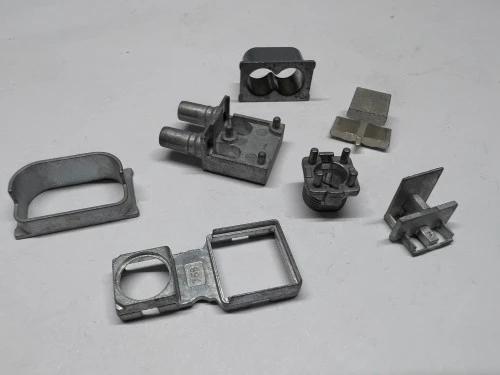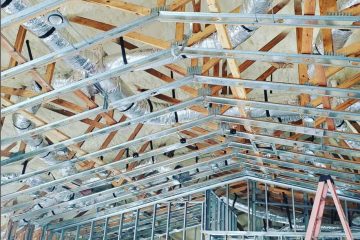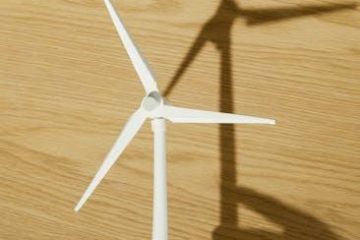Table of Contents
- Understanding the Importance of Energy Efficiency in Your Home
- Key Areas to Focus on During Your Home Energy Assessment
- Essential Tools and Techniques for Effective Evaluations
- Implementing Simple Changes for Maximum Energy Savings
- Long-Term Benefits: How Energy Efficiency Enhances Property Value
- Q&A
- Insights and Conclusions
Understanding the Importance of Energy Efficiency in Your Home
Embracing energy efficiency in the home is not just a trend; it’s a necessity for modern living. By decreasing energy consumption, homeowners can significantly lower their utility bills while simultaneously reducing their environmental footprint. Simple modifications, such as switching to energy-efficient appliances or improving insulation, can yield substantial savings over time. Additionally, taking proactive steps will often produce a significant increase in overall comfort by maintaining a consistent temperature throughout the home.
One effective way to assess your home’s energy efficiency is through a comprehensive energy audit. This evaluation typically identifies areas where energy is being wasted and recommends practical solutions. During the audit, a professional may examine:
- Insulation quality in walls, attics, and basements
- Heating and cooling systems, including their ages and efficiency ratings
- Windows and doors for drafts or leaks
- Lighting fixtures and their energy consumption
- Appliances for their energy usage and potential upgrades
A clearer understanding of energy performance often leads to informed decisions that culminate in efficiency upgrades. Below is a simple comparison table illustrating potential impacts of energy-efficient upgrades:
| Upgrade Type | Cost Savings per Year | Environmental Impact |
|---|---|---|
| LED Lighting | $75 | Reduced carbon footprint |
| High-Efficiency HVAC | $150 | Less greenhouse gas emissions |
| Improved Insulation | $200 | Conserves resources |
By grasping the significance of energy efficiency in every corner of your home, you equip yourself to make better choices that align with both personal and planetary well-being. Identifying and addressing inefficiencies not only enhances the quality of life within your household but also contributes to a sustainable future.


Key Areas to Focus on During Your Home Energy Assessment
When conducting a home energy assessment, it’s essential to examine several critical components that significantly influence your home’s energy efficiency. Start with the insulation, as adequate insulation can keep your home warmer in winter and cooler in summer, reducing the need for heating and cooling systems. Pay special attention to areas like the attic, walls, and basements. Insufficient insulation can lead to energy loss and increased utility bills, making it a focal point of your assessment.
Next, evaluate your windows and doors. These elements are common culprits in energy loss. Look for drafts, cracks, or gaps that may allow air to escape or enter your home. Consider installing energy-efficient windows that provide better thermal performance, and use weather stripping or caulking for doors to seal any openings. Remember, even small leaks can contribute significantly to your overall energy expenses.
Lastly, investigate your heating and cooling systems. Check the efficiency of your HVAC system and assess whether it requires servicing or replacement. A well-maintained HVAC system not only operates more efficiently but also enhances the indoor air quality of your home. Don’t forget to change filters regularly and consider a programmable thermostat to optimize your system’s performance and save energy.


Essential Tools and Techniques for Effective Evaluations
Conducting a thorough energy efficiency home assessment requires a blend of practical tools and analytical techniques. First and foremost, a thermal imaging camera is critical in identifying areas of heat loss or air leaks that may go unnoticed. By visualizing temperature variations, homeowners can prioritize repairs and upgrades effectively. Additionally, a blower door test is invaluable in measuring the tightness of a home. This technique creates a temporary pressure difference to locate leaks, ensuring that your evaluation is comprehensive.
The value of using smart energy meters cannot be overstated. These devices provide real-time data on energy consumption, allowing homeowners to pinpoint periods of excessive usage and adjust habits accordingly. Complementing these meters with energy auditing software can streamline the evaluation process by generating detailed reports and providing recommendations based on your home’s specific data. This combination not only improves understanding but also engages users in the energy-saving journey.
| Tool/Technique | Purpose | Benefits |
|---|---|---|
| Thermal Imaging Camera | Identify heat loss points | Targeted repairs for improved efficiency |
| Blower Door Test | Measure home airtightness | Locate leaks for sealing strategies |
| Smart Energy Meter | Monitor real-time energy use | Inform energy-saving measures |
| Energy Auditing Software | Generate efficiency reports | Customized recommendations for improvements |
Lastly, the role of traditional assessment tools like manual energy audits should not be overlooked. These audits involve compiling a comprehensive breakdown of energy usage through checked appliances, insulation quality, and window efficiency. While labor-intensive, this hands-on approach provides a unique perspective and fosters a deeper connection with the homeowner’s specific energy needs. By combining manual assessments with modern tools and techniques, one can achieve a holistic understanding of home energy efficiency, leading to a more sustainable living environment.


Implementing Simple Changes for Maximum Energy Savings
Maximizing energy savings doesn’t have to be a daunting task; small adjustments can yield significant results. One effective strategy is to seal air leaks around your home. Common culprits include gaps around windows and doors, electrical outlets, and plumbing penetrations. Using weatherstripping and caulk can effectively reduce energy loss and improve comfort levels. Here’s a quick cheat sheet on where to look for air leaks:
- Windows: Ensure they are properly sealed and consider using window treatments to minimize heat transfer.
- Doors: Install door sweeps and use draft stoppers.
- Outlets and Switches: Insert foam gaskets behind faceplates to reduce draft.
Another simple yet impactful change revolves around upgrading your lighting. Transitioning to LED bulbs not only brightens your spaces but also significantly decreases your energy consumption. While these bulbs may have a higher upfront cost, their lifespan and efficiency lead to long-term savings. Consider implementing these alternatives:
| Bulb Type | Average Lifespan | Energy Use (Watts) | Cost Over 10 Years |
|---|---|---|---|
| Incandescent | 1,000 hours | 60 | $480 |
| CFL | 10,000 hours | 13 | $156 |
| LED | 25,000 hours | 10 | $120 |
Lastly, optimizing your heating and cooling systems can deliver significant savings. Regular maintenance is crucial; consider scheduling a service check for your furnace or air conditioning unit at least once a year. In addition, installing a programmable thermostat allows you to set specific temperatures for different times of the day, reducing energy use when you’re not home. Here are a few tips to enhance your HVAC efficiency:
- Regular filter changes: Replace filters every 1-3 months for optimal airflow.
- Use ceiling fans: This can help circulate air and reduce reliance on HVAC systems.
- Seal ducts: Ensure ductwork is airtight to prevent heated or cooled air from escaping.


Long-Term Benefits: How Energy Efficiency Enhances Property Value
Investing in energy efficiency is not just an eco-friendly choice; it significantly adds to the long-term value of your property. Homebuyers today are increasingly knowledgeable about the benefits of energy-efficient features, making them a desirable attribute during property showings. When your home incorporates modern energy-saving technologies, such as LED lighting, high-efficiency appliances, and advanced insulation systems, it stands out in the competitive real estate market. These elements can lead to reduced utility bills, making the property more appealing to potential buyers who are interested in long-term savings.
Moreover, energy-efficient upgrades often translate into tangible financial advantages over time. Homes that boast a high Energy Star rating or similar certifications can command higher sale prices and attract a broader pool of interested buyers. This shift in real estate preference highlights a growing awareness of sustainability and cost-effective living. In addition to immediate savings, energy-efficient homes tend to appreciate faster, providing homeowners with significant equity growth. According to various market studies, properties with energy-efficient features can see an increase in value between 5% to 15% compared to traditional homes.
energy efficiency goes beyond mere numbers; it contributes to a healthier living environment. Homes that are designed to maximize energy efficiency often incorporate better ventilation and air quality measures, which can lead to improved health outcomes for residents. Prospective buyers are increasingly considering the overall quality of life that a property affords, and homes that promote both comfort and sustainability can enhance your property’s appeal. By prioritizing energy efficiency, you ensure that your investment yields not just monetary gain, but also fosters a thriving and healthy community.
Q&A
Energy Efficiency Home Assessment: Q&A
Q1: What is an energy efficiency home assessment? A1: An energy efficiency home assessment is a comprehensive evaluation of your home’s energy usage. It involves analyzing various systems—like heating, cooling, insulation, and appliances—to identify areas where energy is being wasted. The goal is to provide actionable recommendations that can improve your home’s energy efficiency, reduce utility bills, and enhance overall comfort.Q2: Why should I consider an energy efficiency assessment for my home? A2: Conducting an energy efficiency assessment can provide numerous benefits. Not only can you lower your energy bills by identifying and rectifying inefficiencies, but you can also contribute to a greener environment by reducing your carbon footprint. Furthermore, an energy-efficient home often leads to improved comfort with consistent temperatures and better indoor air quality.
Q3: How is an energy efficiency home assessment conducted? A3: An assessment typically begins with a professional auditor conducting a thorough inspection of your home. They will check insulation levels, test heating and cooling systems, inspect windows and doors for drafts, and use tools like blower doors and thermographic cameras to identify energy leaks. After the evaluation, you’ll receive a detailed report with recommendations tailored to your home.
Q4: Who should carry out the assessment? A4: It’s best to hire a certified home energy auditor or an energy efficiency professional who has experience in conducting these assessments. Look for individuals or companies with good reviews, relevant certifications, and a track record of successful assessments to ensure you get a reliable evaluation.
Q5: What are some common recommendations from an energy efficiency assessment? A5: Common recommendations often include upgrading insulation, sealing leaks around windows and doors, replacing old appliances with energy-efficient models, and considering renewable energy options like solar panels. The specific suggestions will depend on your home’s unique characteristics and the findings of the assessment.
Q6: How much does an energy efficiency home assessment cost? A6: The cost of an energy efficiency assessment can vary widely based on location, the size of the home, and the complexity of the evaluation. On average, you might expect to pay anywhere from $200 to $500. Many homeowners find that the savings on energy bills quickly offset the initial assessment cost.
Q7: Is an energy efficiency home assessment worth the investment? A7: Absolutely! While there is a cost associated with the assessment, most homeowners can expect to see significant savings through improved energy efficiency. Additionally, many local governments and utility companies offer rebates or incentives for energy efficiency upgrades, making the assessment an even more worthwhile investment.
Q8: How often should I have an energy efficiency assessment performed? A8: It’s advisable to have an energy efficiency assessment conducted every few years, especially if you’ve made any significant changes to your home. Renovations, new appliances, or changes in energy usage can affect your home’s efficiency. Regular assessments ensure you stay on top of any inefficiencies.
Q9: Can I perform an energy efficiency assessment on my own? A9: While you can certainly do a basic evaluation of your home, such as checking for drafts and examining your insulation, a professional assessment provides a comprehensive analysis that is difficult to achieve on your own. DIY methods can help you identify obvious issues, but skilled auditors can uncover hidden problems that can lead to significant energy losses.
Q10: How do I find a reputable energy auditor? A10: Start by asking for recommendations from friends or family who have had assessments done. You can also search online for certified energy auditors in your area and check reviews on platforms like Yelp or Google. Additionally, organizations like the Building Performance Institute (BPI) and the Residential Energy Services Network (RESNET) offer directories of certified professionals.—An energy efficiency home assessment can be a straightforward yet powerful step toward a more sustainable and cost-effective living space. Taking proactive measures not only benefits you financially but also contributes positively to the environment.




0 Comments